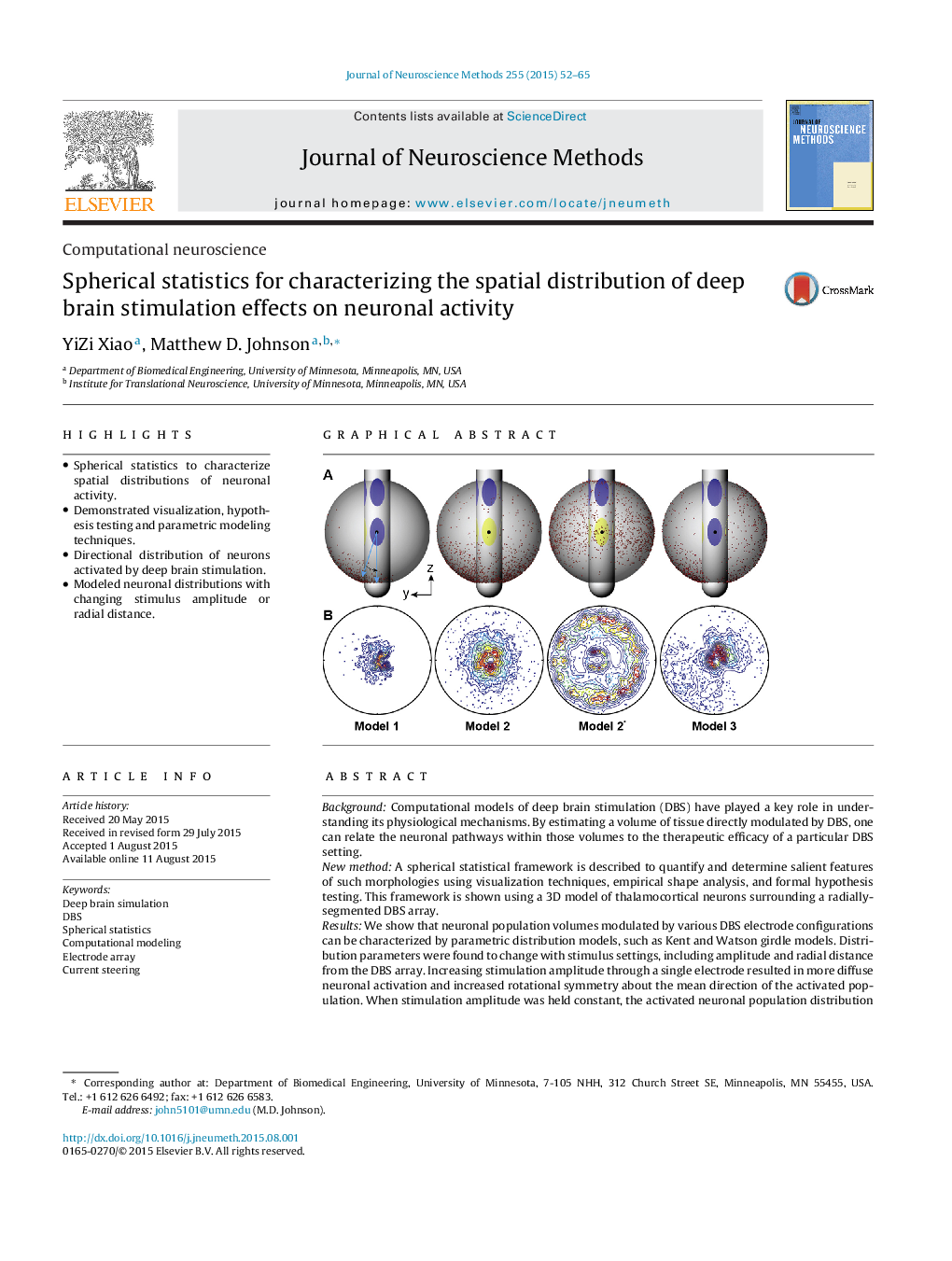| کد مقاله | کد نشریه | سال انتشار | مقاله انگلیسی | نسخه تمام متن |
|---|---|---|---|---|
| 6267886 | 1614614 | 2015 | 14 صفحه PDF | دانلود رایگان |
- Spherical statistics to characterize spatial distributions of neuronal activity.
- Demonstrated visualization, hypothesis testing and parametric modeling techniques.
- Directional distribution of neurons activated by deep brain stimulation.
- Modeled neuronal distributions with changing stimulus amplitude or radial distance.
BackgroundComputational models of deep brain stimulation (DBS) have played a key role in understanding its physiological mechanisms. By estimating a volume of tissue directly modulated by DBS, one can relate the neuronal pathways within those volumes to the therapeutic efficacy of a particular DBS setting.New methodA spherical statistical framework is described to quantify and determine salient features of such morphologies using visualization techniques, empirical shape analysis, and formal hypothesis testing. This framework is shown using a 3D model of thalamocortical neurons surrounding a radially-segmented DBS array.ResultsWe show that neuronal population volumes modulated by various DBS electrode configurations can be characterized by parametric distribution models, such as Kent and Watson girdle models. Distribution parameters were found to change with stimulus settings, including amplitude and radial distance from the DBS array. Increasing stimulation amplitude through a single electrode resulted in more diffuse neuronal activation and increased rotational symmetry about the mean direction of the activated population. When stimulation amplitude was held constant, the activated neuronal population distribution was more concentrated with distance from the DBS array and was also more rotationally asymmetric. We also show how data representation (e.g. stimulus-entrained cell body vs. axon node) can significantly alter model distribution shape.Comparison to existing methodsThis statistical framework provides a quantitative method to analyze the spatial morphologies of DBS-induced effects on neuronal activity.ConclusionsThe application of spherical statistics to assess spatial distributions of neuronal activity has potential usefulness for numerous other recording, labeling, and stimulation modalities.
Journal: Journal of Neuroscience Methods - Volume 255, 30 November 2015, Pages 52-65
